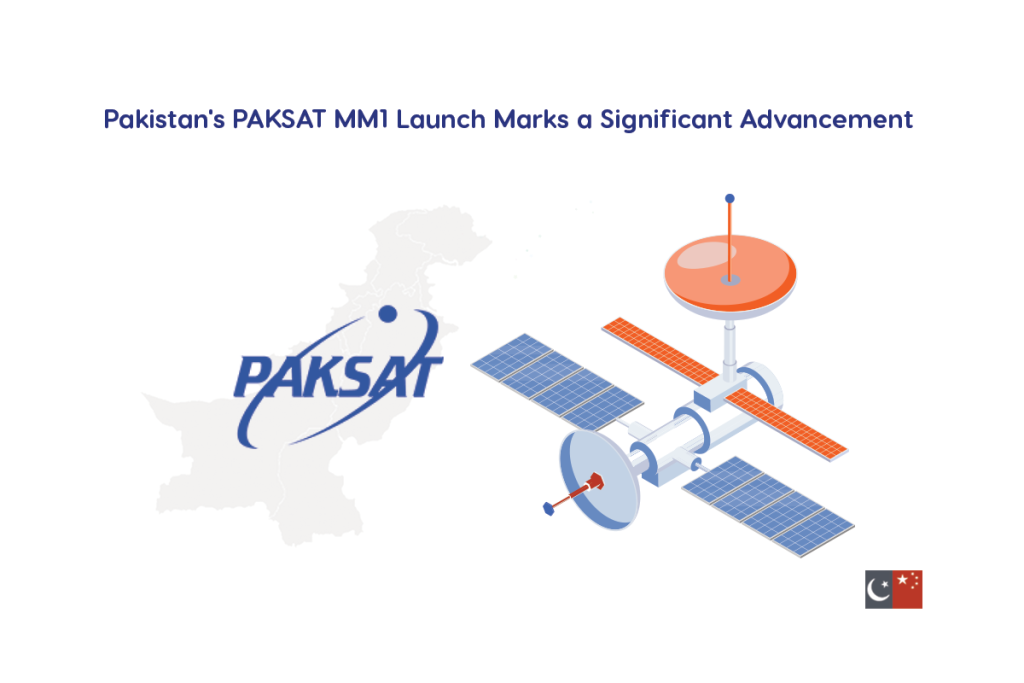Pakistan launched its second communication satellite, PAKSAT MM1, to support its internet and communication infrastructure. The Pakistan Space and Upper Atmosphere Research Commission (Suparco) announced last week that the country’s multi-mission communication satellite will be launched today from China’s Xichang Satellite Launch Centre. Pakistan launched its historic first satellite in May 2024 as part of China’s Chang’e-6 lunar mission from Hainan. In this thorough article, Tashheer’s research team explained every detail related to Pakistan’s PAKSAT MM1 Launch, which Marks a Significant Advancement in Enhancing the Nation’s Communication and Internet Infrastructure. For more information, check out our article on Internet service providers in Pakistan.
Background
Beijing-Islamabad space cooperation dates to 1990 when a communication satellite developed by Pakistan was launched into space aboard a Chinese Long March 2E rocket. After that, Pakistan has relied on a single communication satellite, PAKSAT-1, for several years. This limited the country’s ability to provide widespread internet access and reliable communication services, particularly in remote areas. PAKSAT MM1 launch addresses all these challenges and reflects Pakistan’s expanding standards in the space sector.

Expected Benefits
A statement given by state-run broadcaster Pakistan Television stated that the satellite would provide the finest internet facilities across Pakistan and help improve cellular phones, television broadcasts, and broadband services. It was also mentioned that this satellite would begin providing service in August. Planning Minister Ahsan Iqbal attended the launch event and said, “The Day is not far when we will launch our satellites on our own rockets from Pakistan’s Space Launch Centre. Congratulations, Pakistan.” Prime Minister Shehbaz Sharif, a respected figure in our nation, also shared his congratulations and expressed his hope that the satellite would help provide the fastest internet facility throughout the country. For more tech insights, explore our article on the 8 Best WiFi Cracking Apps for Android.
In a statement, The prime minister said, “I am extremely excited about the potential impact of PAKSAT MM1 on internet connectivity across Pakistan. With its modern communication technology, this satellite promises to revolutionize our digital industry and provide the fastest internet facility nationwide.” Congratulating the nation on the momentous occasion, he said the achievement marked a significant advancement in the country’s space and communication capabilities, adding that he was proud of the national victory.
Launch Details
PAKSAT MM1’s launch is a collaborative effort between Pakistan’s SUPARCO and China’s CGWIC. This momentous event, which took place at the Xichang Satellite Launch Center atop a Long March 3B rocket, signifies a turning point in Pakistan’s space program.
Technical Specifications of PAKSAT MM1
PakSat-MM1, formerly AsiaSat 4, is a communications satellite leased to the Space & Upper Atmosphere Research Commission by Asia Satellite Telecommunications Company (AsiaSat). Initially positioned at 122° East, it now orbits at 38.2° East, offering fixed satellite services such as broadcasting, audio, and data transmission to Asia and the Pacific Ocean. PAKSAT MM1 boasts high-capacity communication technology, equipped with X Ku-band transponders for enhanced coverage and reliability across Pakistan and neighboring regions.
| Spacecraft | AsiaSat 4 |
| Spacecraft Type | Boeing 601 |
| Bus | HS-601HP |
| Launch Mass | 4,137 kg (9,121 lb) |
| Dry Mass | 2,500 kg (5,500 lb) |
| Manufacturer | Hughes Space and Communications |
| Dimensions | 3.4 m x 3.5 m x 5.8 m |
| Span | 26.2 m on orbit |
| Power | 9.6 kW |
Economic and Social Impact
The prime minister said the satellite would enhance citizen’s lives and promote economic activities, e-commerce, and e-governance. PM Shehbaz also said that “the launch from the Xichang Satellite Launch Centre was a testament to the strong partnership between the two countries (Pakistan and China).” “It is through such cooperative efforts that we can propel our nation forward and harness the power of technology for the benefit of our people.”
He said that PAKSAT MM1’s positioning in a geostationary orbit 36,000 kilometers above the earth was an impressive feat that displays the nation’s scientific and technological prowess. PM Shehbaz expressed his heartfelt gratitude towards Suparco and all those involved in the mission. For more insights into government initiatives driving technological advancement, explore our article on the List of Top 10 IT Projects Launched by the Government of Pakistan.
Future Prospects
PAKSAT MM1 satellite will provide communication services like broadband internet, TV broadcasting and telecommunication. The satellite’s technical capabilities are impressive, and features like high-throughput system (HTS) technology allow for a maximum throughput of approximately 1 Gbps per beam. It also includes multiple transponder in C, Ku and Ka bands that cover regions including Pakistan, the Indian Ocean, the Middle East and parts of Africa and Europe. The satellite is designed to operate for 15 years with control stations located in Lahore and Karachi. Prime Minister called the collective efforts and determination the driving forces of Pakistan’s progress and said the launch was a “testament to the nation’s potential and the bright future that lies ahead.” He prayed, “May the launch of PAK MM1 be the harbinger of even greater successes in our quest for excellence in space and communication technology.”
Final Note
PAKSAT MM1’s launch is a collaborative effort between Pakistan’s SUPARCO and China’s CGWIC. In this thorough blog, Tashheer’s research team explained how Pakistan’s PAKSAT MM1 launch significantly advances the nation’s communication and internet infrastructure. PAKSAT-MM1’s primary objectives include providing high-speed broadband internet, supporting e-commerce, telemedicine, and e-governance and improving connectivity in remote and underserved regions of Pakistan.





